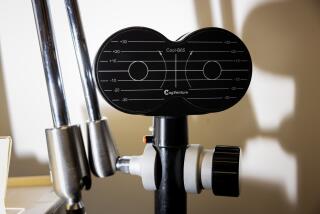Is the autistic brain too wired or not wired enough?

Trying to find out how the autistic brain is “different” can be like studying a spinning coin: one side says its circuits are over-connected; the other, under-connected.
How can the autistic brain do extraordinary things, like retain a photographic memory of city streets, yet fail to recall a face? Store a large vocabulary, yet fall flat in social conversation?
New evidence from a Stanford University study published online Wednesday in JAMA Psychiatry freezes the coin on the hyper-connection side, at least for a time. It suggests that children with autism have higher connectivity in certain large-scale circuits, including one that helps determine the relative importance of stimuli, and another that mediates between the “inside” and “outside” world of the mind.
The results suggest that the neuronal map of children with autism may differ from that of the adults and adolescents who make up the bulk of autism brain-scan studies. And they show that such brain scans can be used to distinguish between a child who has tested as autistic and a typically developing one. Such scans were matched to diagnosed autistic children with an accuracy as high as 83%, according to the study, which examined 20 children, who ranged in age from 7 to 12.
“Eventually, down the line, perhaps this can help aid in having more objective criteria for determining autism and distinguishing it from other disorders,” said Lucina Uddin, a Stanford cognitive neuroscientist who wrote the study. “We’re looking for biomarkers, very specific things that you can see in the brains of kids with autism that discriminate them from typically developing kids.”
Two networks that have been implicated in the disorder showed high degrees of hyper-connectivity in the study: salience and default mode.
The salience network “usually responds to meaningful stimuli, such as loud noises in the environment, or thoughts that are very meaningful to a particular individual,” said Uddin. “It’s a system for directing attention to important events.”
The default mode, identified in 2001, is generally inactive while people perform tasks, but kicks into gear when the brain is in a kind of maintenance mode: during introspection, review, daydreaming and talking to oneself.
Malfunction of either or both circuits could underlie such behavioral phenomena as the inability to attend to a mother’s voice, and being overwhelmed by intrusive stimuli or change.
Still, many studies have highlighted under-connection as a possible neurobiological root for these and other autism symptoms.
Both views can coexist, said Uddin, particularly if hyper-connectivity within one network comes at the expense of interaction among networks.
“We’re still trying to tease apart exactly what’s hyper-connected and what’s under-connected,” Uddin said.
Jeffrey Anderson, a neuro-radiologist at University of Utah who has examined such structure – including scanning the brain of Temple Grandin – said “global” scans may be blurred by a lack of distinction among smaller-scale regions that are under-connected. And he cautioned that some regions of the brain are designed to shut down while others are functioning. Under-connection in such an inhibitory sub-region could underlie hyper-connection of the larger network.
“The overwhelming preponderance of the data seems to be that brain regions, especially regions that are far apart, are under-connected,” said Anderson. “The regions in the cerebral cortex just aren’t wired as strongly.”
Nonetheless, Anderson said, the evidence from scans of large-scale networks in the Stanford study “are really very consistent with what we and others in the field are observing.”
The autistic brain remains a case of too much and too little. The coin, in other words, spins on.







